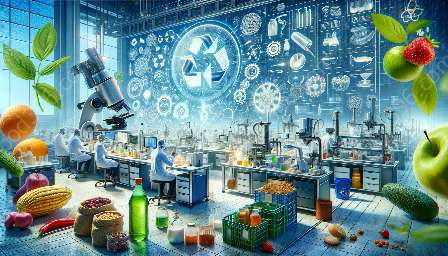Food transportation is a critical aspect of the food supply chain, ensuring that products reach consumers in a safe and timely manner. Monitoring and tracking technology plays a vital role in ensuring the quality and safety of food during transportation, integrating with food storage and transportation practices and leveraging advancements in food science and technology.
Importance of Monitoring and Tracking in Food Transportation
For perishable food products, maintaining appropriate environmental conditions during transportation is crucial to preserving freshness and preventing spoilage. Monitoring and tracking technology enables real-time visibility into parameters such as temperature, humidity, and location, allowing for proactive intervention if deviations occur.
This technology not only ensures compliance with food safety regulations but also helps in maintaining the quality and shelf life of food products, contributing to better consumer experiences and reduced waste.
Integration with Food Storage and Transportation
Monitoring and tracking technology seamlessly integrates with modern food storage and transportation practices, offering a holistic approach to managing the entire supply chain. With the use of IoT (Internet of Things) devices, sensors, and data analytics, companies can optimize storage and transportation operations, minimize losses, and improve efficiency.
By collecting and analyzing data at every stage of the transportation process, stakeholders can make informed decisions to enhance route planning, optimize storage conditions, and address potential issues in a proactive manner. This integration ultimately leads to cost savings and a more sustainable approach to food transportation.
Advancements in Food Science and Technology
The marriage of monitoring and tracking technology with food science and technology has revolutionized the way food is transported and stored. Innovations such as smart packaging, blockchain-based traceability, and predictive analytics are reshaping the industry, providing greater transparency and assurance of food safety and quality.
Smart sensors embedded in packaging materials can provide real-time data on the condition of the food products, allowing for immediate corrective actions if necessary. Furthermore, blockchain technology enables end-to-end traceability, enhancing food safety by swiftly identifying sources of contamination or other issues.
Additionally, the use of predictive analytics based on data gathered through monitoring and tracking technology enables proactive risk management and decision-making, ultimately ensuring that food products reach their destination in optimal condition.
Benefits of Monitoring and Tracking Technology
The incorporation of monitoring and tracking technology in food transportation brings a plethora of benefits to all stakeholders involved. These benefits include:
- Enhanced food safety: Ensuring that food products are transported under appropriate conditions and promptly addressing any deviations.
- Improved quality control: Providing visibility into environmental parameters to maintain the quality and freshness of food products.
- Optimized supply chain: Using data insights to streamline transportation and storage processes, leading to greater efficiency.
- Reduced waste: Minimizing spoilage and losses through proactive monitoring and intervention.
- Consumer confidence: Building trust and loyalty by delivering safe and high-quality food products.
Future Outlook
The evolution of monitoring and tracking technology for food transportation is poised to continue, driven by advancements in sensor technology, data analytics, and collaboration across the industry. As the demand for transparency and sustainability grows, these innovations will play an increasingly pivotal role in ensuring the integrity of the food supply chain.
Consequently, stakeholders in the food industry should stay abreast of these developments and consider integrating these technologies into their operations to remain competitive and meet the evolving needs of consumers.

